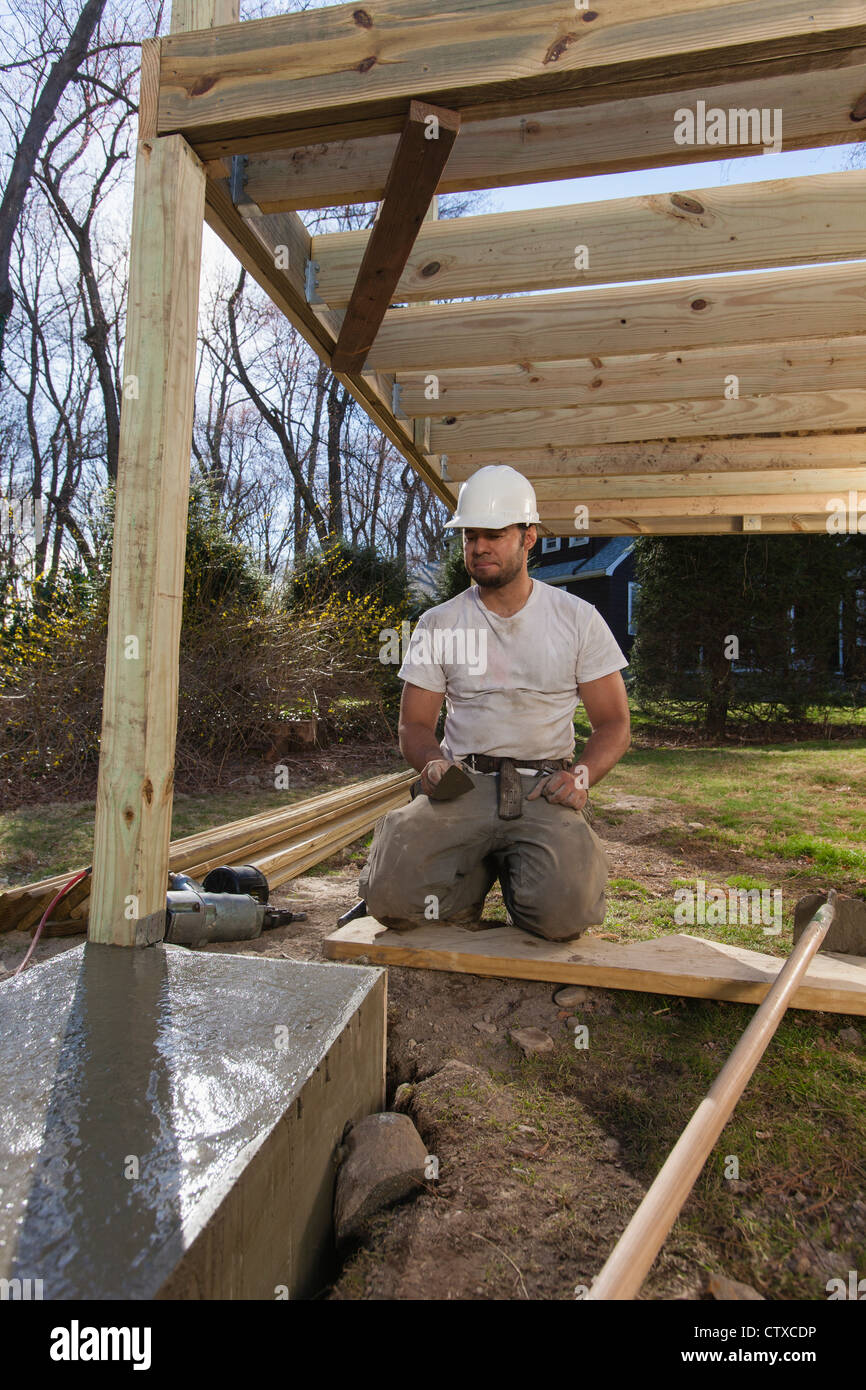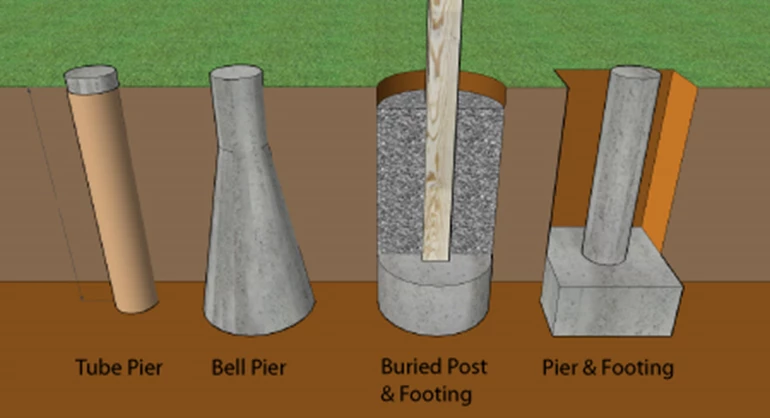Structure from scratch: The Ultimate Guide to Designing and Installing Deck Footings
Make Certain Stability and Long Life With Appropriately Installed Deck Footings
Deck footings may not be the most attractive aspect of deck building, but they play a vital duty in ensuring security and long life. In this discussion, we will explore the relevance of correct deck grounds, elements to consider throughout installment, various kinds of footings available, detailed setup guide, and upkeep ideas for guaranteeing lasting grounds.

Importance of Correct Deck Footings
Why are properly installed deck footings important for the stability and durability of your deck? Deck footings are the foundation on which the deck rests, transferring the lots from the deck to the ground.
To start with, properly set up deck footings disperse the weight of the deck equally, preventing any irregular settling or sinking. This is specifically vital in locations with unsteady soil, as it aids to minimize the danger of the deck moving or breaking down. In addition, well-installed grounds make sure that the deck stays level, protecting against any kind of architectural damage that can occur when a deck comes to be unequal.
Secondly, properly mounted footings offer a strong support for the deck, avoiding excessive activity and persuade. This helps to preserve the architectural honesty of the deck, decreasing the risk of mishaps or injuries. It likewise lessens the damage on the deck, allowing it to stand up to the elements and normal use for a longer duration of time.
Aspects to Think About for Deck Ground Setup
When installing deck grounds, there are numerous crucial aspects to think about for proper installation. Various dirt types have different load-bearing abilities, so it is vital to carry out a dirt test to make sure the grounds can sustain the weight of the deck and its owners. By taking into account these elements, you can make certain the proper installation of deck footings and appreciate a secure and lasting deck.
Kinds of Deck Footings to Pick From
There are a number of various kinds of deck footings offered for you to select from. Each kind has its own advantages and negative aspects, so it's vital to consider your particular demands and the problems of your deck prior to deciding.
One usual kind of deck ground is the concrete ground. This includes digging openings in the ground and putting concrete right into them to develop a strong foundation. Concrete grounds are durable and provide superb security, making them appropriate for decks in areas with challenging dirt problems or high wind tons.
Another alternative is the helical pier ground, which contains a steel shaft with helical plates that are screwed into the ground. These grounds are fast to set up and can be used in various dirt types, including sandy or clay dirts. They are also flexible, permitting for simple leveling of the deck.
Sonotube grounds are an additional prominent choice. These grounds are produced by placing a cardboard tube in an opening and filling it with concrete. Sonotube grounds are fairly easy to mount and offer adequate security for smaller decks or in locations with less requiring soil problems.

When choosing the type of deck footing, it's critical to consider factors such as soil conditions, deck dimension and weight, neighborhood building ordinance, and individual choices. By picking the proper ground kind, you can make sure the security and durability of your deck.
Step-by-Step Guide for Installing Deck Footings

Establish the location: Begin by noting the exact setting of each ground making use of my latest blog post stakes and string (Deck Footings). Think about any kind of local building regulations or laws concerning obstacle ranges
Dig the openings: Make use of click this site a post hole digger or an auger to dig the holes for the footings. Normally, a deepness of at the very least 36 inches is advised for stability.
Level the holes: Make sure that the bases of the openings are degree (Deck Footings). This can be attained by utilizing a level or a straight board across the top of the holes
Add gravel: Place a layer of gravel at the end of each hole to enhance water drainage and prevent the ground from sinking into the dirt over time.
Insert the ground kinds: Put the ground creates right into the holes, ensuring they are centered and level. Use risks to safeguard them in area.
Mix and put concrete: Adhere to the guidelines on the concrete mix bag to prepare the concrete. Put the concrete right into the footing forms, filling them completely.
Smooth the surface area: Utilize a trowel to smooth the surface area of the concrete and eliminate any type of air pockets. Enable the concrete to cure according to the manufacturer's instructions.
Upkeep Tips for Durable Deck Grounds
Correct maintenance is critical for making sure the longevity and security of deck footings. By on a regular basis examining and keeping your deck footings, you can protect against damage and prospective safety dangers.
Regular cleansing is additionally vital for keeping deck footings. Plant life, dirt, and debris can build up around the grounds, which can bring about moisture accumulation and degeneration. Cleansing the grounds routinely, making use of a brush or a pressure washer, can help avoid these problems and check this expand the life-span of your deck.
Along with cleaning, it is very important to maintain the location around the grounds free from any obstructions. Stay clear of stacking items against the footings or enabling plants to grow as well near to them. These blockages can catch dampness and create the grounds to deteriorate over time.
Lastly, routine resealing of the grounds is advised to shield them from dampness and various other ecological variables. Using a waterproof sealer can aid prevent water damage and expand the lifespan of the grounds.
Conclusion
Finally, proper setup of deck footings is critical for making certain security and long life of your deck. Aspects such as soil type, load capacity, and neighborhood building regulations require to be considered when choosing the right sort of deck grounds. Complying with a step-by-step overview for installment and routine maintenance will aid to make certain the grounds remain long-lasting and sturdy.
In this conversation, we will explore the relevance of appropriate deck footings, variables to think about during installment, different types of grounds available, detailed setup guide, and upkeep ideas for guaranteeing long-lasting grounds. Deck footings are the structure on which the deck rests, moving the load from the deck to the ground.One usual type of deck ground is the concrete footing. Put the ground kinds: Place the footing forms into the openings, ensuring they are focused and level.In verdict, appropriate installment of deck footings is crucial for making certain stability and durability of your deck.